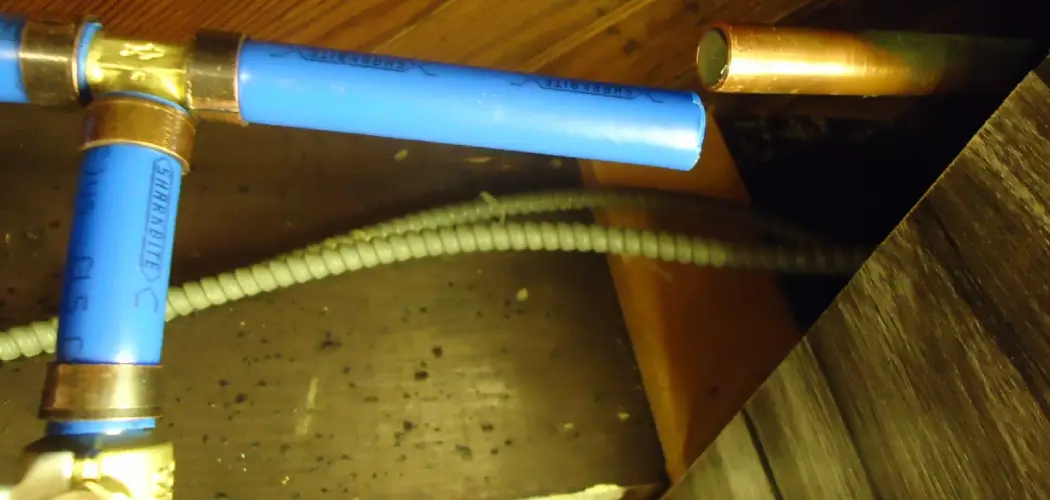It’s a nightmare to look down in the basement and see exposed pipes! Not only is it an eyesore, but they can also be dangerous for anyone who may come in contact with them. Thankfully, there are a few simple steps you can take to hide those wayward pipes so that your home has all the charm of the high-end decor it deserves.
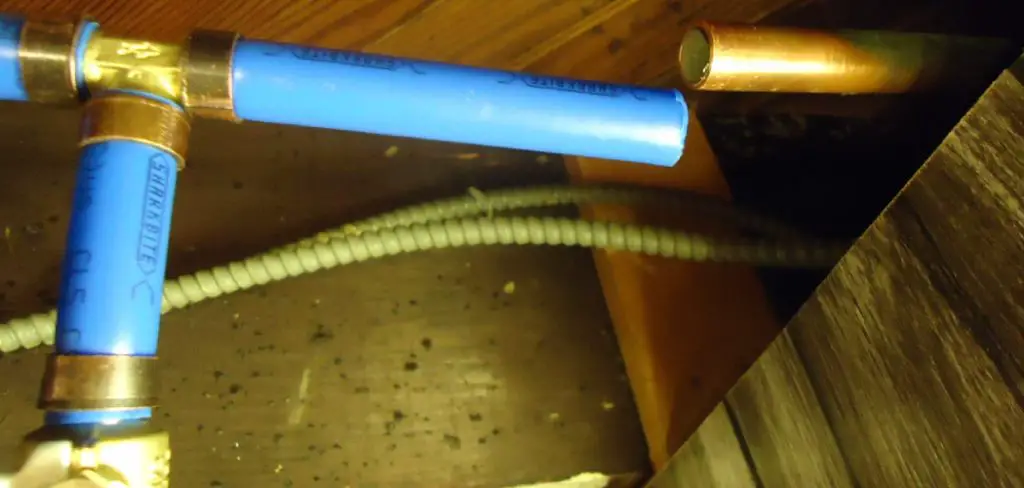
In this blog post, we’ll share some tips on how to hide basement pipes without breaking your budget or sacrificing safety. Read on to learn more about how you can turn even unsightly exposed piping into something functional and beautiful!
9 Best Ways on How to Hide Basement Pipes
1. Cover Them Up:
The most obvious solution is to cover up the pipes with a decorative material like wood, fabric, or wallpaper. This approach is not only inexpensive and easy to do but it also adds an extra layer of protection from any accidental contact with the pipes. Be sure to use materials that are flame-resistant and non-toxic if you plan to use them in close proximity to combustible materials.
2. Install Pipe Covers:
Installing pipe covers is a great way to hide pipes while also providing an extra layer of insulation between exposed metal pipes and combustible materials. They come in a variety of colors and styles so they can blend in with the rest of your decor or stand out as a statement piece. Plus, they can be easily removed and replaced if necessary.
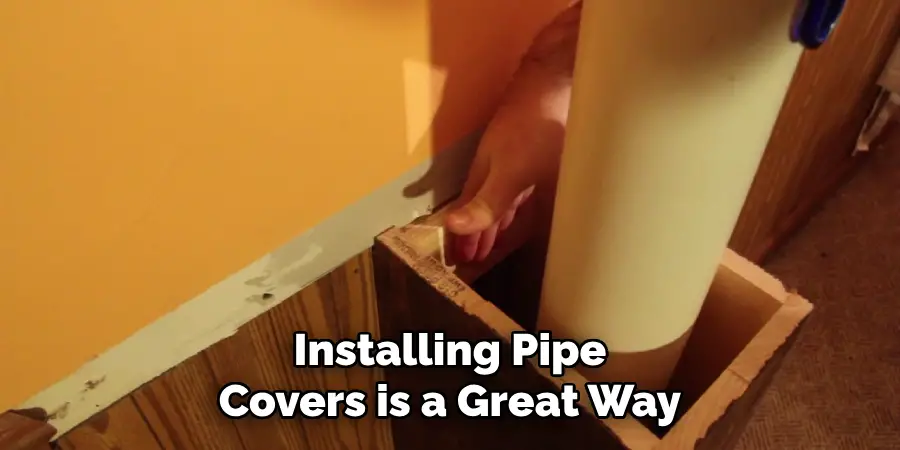
3. Add Shelving:
Adding shelving to the area around exposed pipes is another great way to hide them while also creating more usable space. You can use bookshelves or floating shelves that are easy to install and come in all kinds of materials like wood, plastic, and metal. This method also allows you to keep items like books, plants, and artwork off the floor while still making your basement look neat and organized.
4. Paint the Walls:
You can use paint or wallpaper to disguise exposed pipes in the basement walls. This is especially true if you choose a dark color for your walls that will offset the light-colored pipes. Plus, it is also a great way to make the basement look more inviting and give it an updated feel.
5. Hang Curtains:
Hanging curtains in front of exposed pipes is an easy fix that won’t break your budget. This option works best for smaller spaces since you can easily adjust the length of the curtain panels to fit the area around the pipes. Plus, curtains can also be used to add a touch of style and color to the space.
6. Install a Backsplash:
If you want to get really creative, consider installing a backsplash behind exposed pipes. This option works best in larger areas that are not too difficult to access such as the kitchen or laundry room. Backsplashes come in many materials, colors, and styles so you’re sure to find one that works for your space.
7. Install a Faux Wall:
If you have the budget and time to invest, installing a faux wall is an effective way to hide exposed pipes while also creating a unique look for your basement. This option can be a bit pricey, but it is definitely worth the investment if you want to transform your space and create a more inviting atmosphere.
8. Use Rope Lights:
Rope lights are an inexpensive way to both hide and add ambiance to exposed pipes in your basement. This option works best in smaller areas since the rope lights can be easily concealed behind furniture or shelving units. Plus, you can also use the lights to draw attention to particular areas of your basement that you want to highlight.
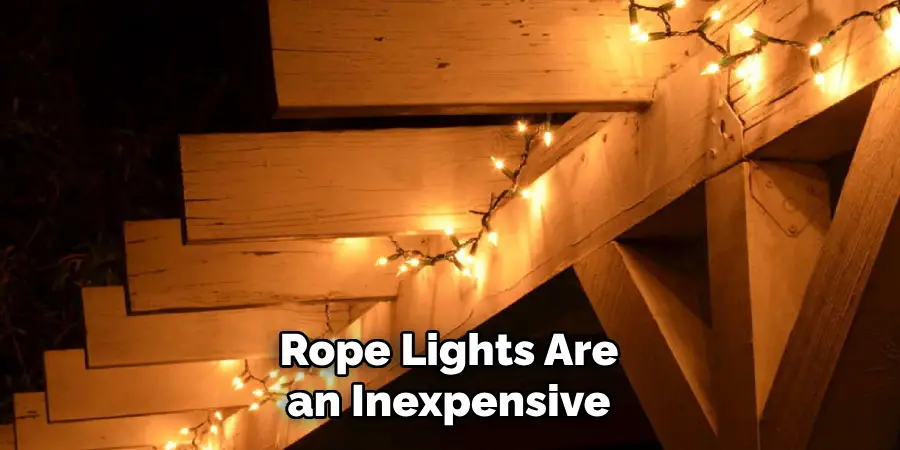
9. Paint the Pipes:
If you don’t mind seeing the pipes but want to change their look, then painting them is a great option. You can use any kind of paint so you can match whatever color palette you’re going for in the room. Just make sure that you use paint specifically designed for pipes so it won’t damage the material.
These are just some of the ways you can hide basement pipes. With a little bit of creativity and ingenuity, you can easily transform your space without breaking the bank. Good luck!
Additional Tips and Tricks to Hide Basement Pipes
- Add a false wall to your basement by erecting a frame using two-by-fours and then covering it with drywall or paneling. This will effectively “hide” the pipes from view while allowing you access if needed.
- Create an enclosed space around the pipes with sheetrock and then add a decorative doorway or gate. This is a great way to make the pipes look like an intentional part of your basement design.
- Create a “pipe wall” by using wood planks or other materials to cover the pipes and then adding shelves or artwork around them. This will give your basement more dimension and style while hiding the pipes in plain sight.
- Paint the pipes to match the color of your walls. This can be a great way to blend the pipes in with the rest of the basement and make them less noticeable.
- Incorporate other pieces of furniture into your design plans, such as bookcases or cabinets, that will help conceal any exposed pipes.
- Install curtains on rods around exposed piping. This can be an inexpensive and stylish way to hide the pipes while also adding some color and texture to the basement space.
- Use decorative boxes or baskets to store items that may be used around your exposed piping, such as tools or supplies. Not only will these help to conceal the pipes but they’ll also help keep them organized!
- Use area rugs or carpets to draw attention away from the exposed pipes while also adding some warmth and texture to the space.
- Add plants or other greenery around the pipes as an easy way to soften their look and make them less visible.
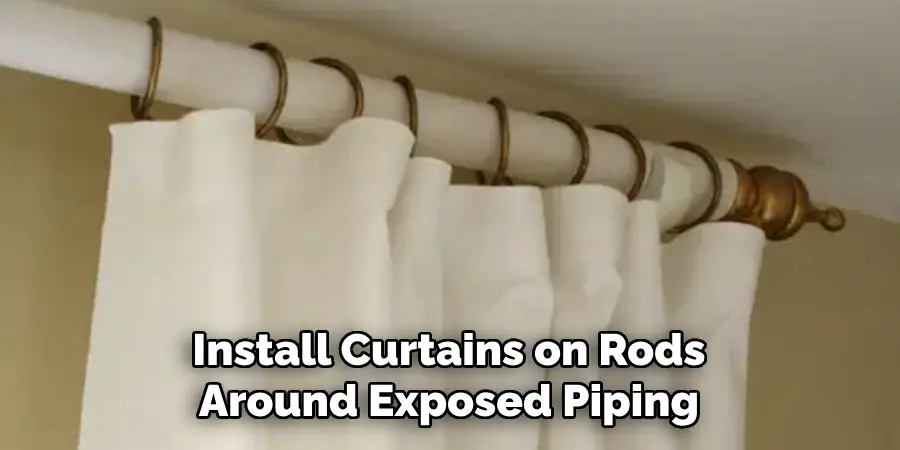
Following these tips and tricks can help you make the most of your basement design by cleverly concealing any exposed pipes. With a little creativity, you can turn an unsightly problem into a stylish and functional living space!
Frequently Asked Questions
What Are Some of the Best Ways to Hide Basement Pipes?
One of the most effective solutions for hiding basement pipes is to build a wall around them. This will ensure that the pipes blend in with the rest of your decor and become almost invisible. If you’re looking for a more creative solution, you could also try covering the pipes with decorative panels or fabric.
Another option is to use a pipe wrap, which can be easily installed around the pipes to give them a neat, polished look without drawing attention to them. Finally, you could also paint the pipes in a color that matches the walls and fixtures of your basement for an even more discrete appearance.
What Material Is Best for Covering Basement Pipes?
The best material for covering basement pipes depends on the look you’re going for. Fabric is a great option if you want to give your basement an airy, rustic vibe. Alternatively, you might opt for wood or plastic panels if you’re looking for a more modern aesthetic. You could also consider using metal mesh or sheeting to give the space an industrial touch. No matter what material you choose, make sure it’s durable enough to stand up against water and temperature changes.
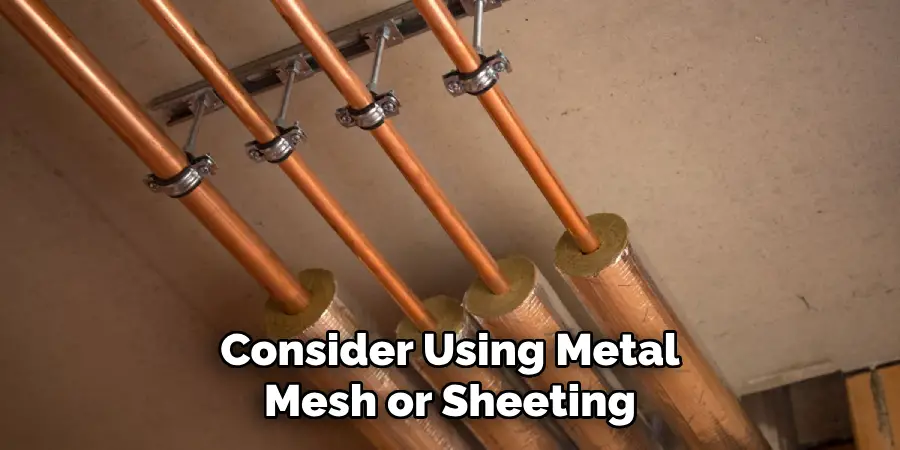
How Do I Make Sure the Pipes Are Properly Insulated?
It is important to ensure that your basement pipes are properly insulated for optimal performance. The most common type of insulation used on pipes is foam pipe insulation, which comes in pre-slit tubes and wraps easily around the pipes. You can also use fiberglass insulation or spray foam for more comprehensive coverage. Be sure to double-check that the insulation you choose is compatible with your type of pipe and the temperature range of your basement.
Are There Any Maintenance Tips to Keep My Basement Pipes in Good Shape?
Periodically inspecting your pipes for signs of corrosion or leaks is key to ensuring their longevity. If you notice any issues, contact a professional right away to avoid further damage. It is also important to clear out any debris that might be blocking the pipes, as this can cause them to malfunction. Keeping an eye on your basement pipes and taking the appropriate steps to maintain them should help them last for years to come.
Conclusion
Now you know how to hide basement pipes and keep them in good shape with the right insulation and maintenance. With a few simple steps, you can transform your basement into a space that looks polished and inviting.
Whether you choose to build walls around the pipes or cover them with fabric, wood panels, or metal sheeting, there are plenty of options for making your basement look its best. Just remember to follow standard safety precautions when installing insulation or performing maintenance on basement pipes. With careful planning, you can make your basement a beautiful and functional part of your home.

